Since the advent of the atomic bomb in the 1940s, nuclear energy has gradually become mastered. To be precise, "atomic energy" should be chemical energy. For example, burning coal, oil or natural gas is the "atomic energy" because it is the energy released by the chemical reaction of combustible materials through combustion. The chemical reaction process is simply a molecular structure in which the molecular structure of one or several substances becomes another substance or substances in the reaction, that is, one or several substances become another one or several new ones. The substance does not involve changes in the atom. Nuclear energy, on the nuclear nucleus, changes the original nuclear structure through a nuclear reaction, from a nucleus to another new nucleus, from one element to another, or from an isotope. energy. Nuclear power generation uses these isotopes to generate heat from the nuclear splitting reaction, heating the water to high temperatures and pressures, and driving the turbine to generate electricity.
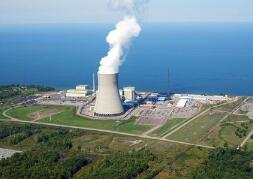
1. Nuclear fission power generation
Nuclear fission power generation converts nuclear energy released by nuclear fission into electrical energy. There are many types of reactors in nuclear power plants. At present, the technologies are relatively mature and put into commercial operation. The following are commonly used: pressurized water reactors, boiling water reactors, heavy water reactors and other reactors. The main reactor type is a pressurized water reactor. The pressurized water reactor nuclear power plant is mainly composed of nuclear reactor, primary loop system, secondary loop system and other auxiliary systems and equipment. The primary loop system, also known as the nuclear island, is a thermal energy device that converts fission into water vapor. The nuclear energy generated by the reactor increases the heating temperature of the core, and the high-temperature, high-pressure cooling water flows into the core under the driving of the main pump, bringing the heat in the core to the steam generator. The steam generator then transfers the heat to the feed water in the secondary circuit, so that the feed water is heated to high pressure steam, and the exothermic cooling water flows back to the core. This cycle reciprocates to form a closed loop. To ensure safety, the entire primary loop system main unit is centrally installed in the containment.
The secondary circuit circulation system, also known as the conventional island, consists of steam turbines, generators, condensers, secondary circuit circulation pumps, heater deaerators and water tanks. The feed water of the steam generator in the second circuit absorbs the heat from the circuit and turns into high-pressure steam, which drives the steam turbine and drives the generator to generate electricity. After the work, the exhaust gas is cooled and condensed into water in the condenser, and then sent to the heater by the feed water pump to be heated and then returned to the steam generator, and then turned into high-pressure steam to drive the generator to generate electricity, thus forming a second closed loop. Loop. The secondary circuit system equipment is installed in the turbine generator building.
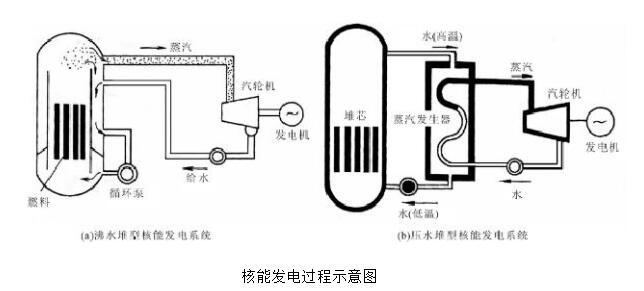
2. Nuclear fusion power generation
Studies have shown that the energy released by each nucleus in a nuclear fusion reaction is about four times higher than the amount released by each nucleus in a nuclear fission reaction, so nuclear fusion energy is a kind of energy that is changed to be larger than nuclear fission. Solar energy is produced by nuclear fusion reactions of hydrogen. Nuclear fusion reactions are also known as thermonuclear reactions. The fuel used in the nuclear fusion reaction is lanthanum and cerium, which is neither toxic nor radioactive, and does not produce environmental pollution and greenhouse gases. It is the clean energy source with the most development and application prospects. Nuclear fusion fuels are abundant in seawater. There are about one atom per 600 hydrogen atoms in seawater. Therefore, the total amount of plutonium in the Shanghai water is about 40 trillion tons. The strontium contained in seawater is 30 mg / L.
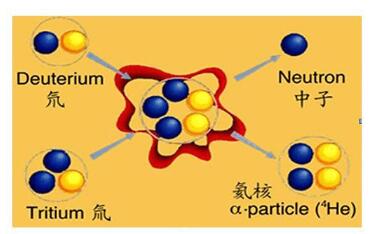
The fusion energy released by these enthalpy fusions is equivalent to the energy of 300 L of gasoline burning. In this sense, if the use of nuclear fusion energy is achieved, 1 L of seawater is equivalent to 300 L of gasoline. Therefore, the extraction of strontium from seawater is almost inexhaustible and inexhaustible. Another raw material for nuclear fusion reaction can be made of lithium. The storage of lithium on the earth is more than 200 billion tons, which is enough for human development and utilization of nuclear fusion energy. In addition, according to the data, there is abundant æ°¦-3 stored on the moon, and the nuclear fusion reaction of æ°˜ and æ°¦-3 releases more energy than the æ°˜-æ°š nuclear fusion reaction, and æ°˜ and æ°¦-3 The nuclear fusion reaction produces substantially no neutrons, thereby greatly reducing the radiation damage of the equipment material and reducing the level of induced radioactivity.
The significance of people detecting the moon and developing the moon is evident. However, the realization of "controlled nuclear fusion" has always been a problem that plagues the use of nuclear fusion energy, and has attracted the attention of research institutions at home and abroad. In November 2006, the European Union, India, Japan, South Korea, the United States, Russia and China formally reached an agreement to build the world's first controlled nuclear fusion reactor in Cadalac, France. It is estimated that it will take 10 years. Completion, if successful, the future power supply to the world will no longer be constrained by complex conditions.
Nuclear power is still the lowest choice for power generation costs“The results of the analysis show that nuclear power is the lowest cost of power generation in all countries with a factor of 3%.†Recently, the International Energy Agency (IEA) and the Nuclear Energy Agency (NEA) jointly issued a standard This conclusion was reached in the LCEE survey report.
This power generation cost survey report, called “Version 8.0â€, collects and counts operational data from 181 different types of power plants from 19 OECD countries and 3 non-OECD countries. The complete working cycle of the plant calculates its LCOE, which is the relatively stable production cost of the plant. The report uses three coefficients of 3%, 7%, and 10% for LCOE analysis.
“Nuclear power needs to invest a lot of capital to increase productivity, so with the increase of LCOE analysis coefficient, nuclear power production costs will also rise,†the report said during the analysis.
As far as the analysis results are concerned, in the case of the 7% coefficient, the median value of the nuclear power LCOE is similar to that of coal-fired power generation, and in the case of the 10% coefficient, the nuclear LCOE median value is higher than that of coal-fired power generation and natural gas power generation. These results take into account the carbon cost of $30/ton and the difference in fuel costs between different regions.
According to the report, in the case of a coefficient of 7%, the LCOE fluctuation range of coal-fired power plants is 76 US dollars / MWh (Germany) ~ 107 US dollars / MWh (Japan), and the natural gas power plant LCOE is 66 US dollars / MWh. (US) ~ 138 US dollars / MWh (Japan).
The LCOE of China's nuclear power plants is about US$37/MWh~48 US$/MWh under the 7% coefficient; the LCOE median value of coal-fired power plants is US$78/MWh; the median LCOE of natural gas power generation is US$93. / MWh.
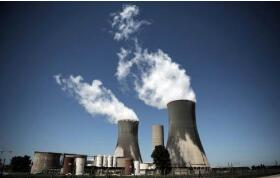
1. Foreign nuclear power development
The United States is the world's largest nuclear power country. It currently operates 104 nuclear power units with an installed capacity of 970 GW, accounting for 29% of the world's nuclear power installed capacity and 20% of the United States. Nearly 135 nuclear reactors are currently operating in Europe with a total installed capacity of 125 GW, accounting for 35% of total European electricity generation. The UK faces the greatest energy pressure. Most of the current 12 nuclear power plants were built in the mid-20th century. Its nuclear power provides 25% of the country's electricity share, and natural gas power generation accounts for 40%. Although France is the world's country with the highest proportion of nuclear power (about 80% of total electricity generation) and exports electricity to neighboring countries, France is still actively developing nuclear power and will build a ball-bed reactor (NPP) by 2020. type). In recent years, Russia has overcome the obstacles to the public's strong opposition to nuclear power construction after the Chernobyl nuclear accident and continues to implement its strong nuclear industry development plan. In Russia, 30 reactors with 10 nuclear power plants were operating in 2004, with a total power of 22.242 GW. Currently, nuclear power accounts for 16% of the national power generation [3].
Among Asian countries, South Korea is one of the most successful countries in developing nuclear power in developing countries, and nuclear power generation accounts for 40% of the country's electricity generation. Since the completion of the first nuclear power plant in the 1970s, South Korea's nuclear power has been developing steadily, and it is expected that by 2015, South Korea will build 12 new nuclear power plants. The Japan Energy Economic Research Institute also said that the share of Japanese nuclear power in primary energy will increase from 11% in 2004 to 20% in 2030. India currently has a total installed nuclear power capacity of 11 million kW and is planned to reach 29 million kW by 2020, 63 million kW by 2030, 131 million kW by 2040, and 275 million kW by 2050.
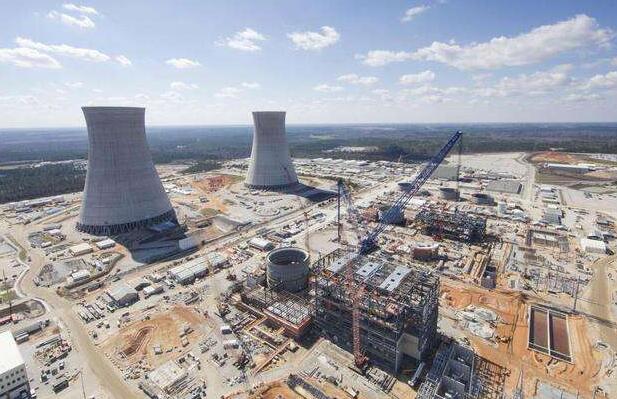
2. China's nuclear power development
In 2007, China's nuclear power generation totaled 62.862 billion kwh, and the on-grid electricity was 59.263 billion kwh, up 14.61% and 14.39% respectively. Two units of 1.06 million kilowatts of Tianwan Nuclear Power Plant were put into commercial operation in May and August 2007 respectively. The number of nuclear power operation units in China reached 11 and the total installed capacity reached 9.078 million kilowatts.
As of the end of 2007, China's power installed capacity reached 713 million kilowatts, and the nation's power supply and demand continued to maintain an overall balance. At the same time, with the two million-kilowatt nuclear power units of the Tianwan Nuclear Power Plant put into operation, the installed capacity of nuclear power in the country has reached 8.85 million kilowatts.
In 2007, the national hydropower and thermal power installed capacity all maintained more than 10% growth, reaching 145 million kilowatts and 554 million kilowatts respectively. The total installed capacity of wind power grid-connected production doubled to 4.03 million kilowatts.
In 2008, China unifies the tax policy that encourages the development of nuclear power. Actively promoting nuclear power construction will improve China's energy supply structure, ensure energy security and economic security, and protect the environment.
China is increasing its energy structure adjustment [4]. It is imperative to actively develop clean and high-quality energy such as nuclear power, wind power and hydropower. China's energy structure is still dominated by coal, and the proportion of clean and high-quality energy is low.
The government is planning to adjust the medium and long-term development plan for nuclear power, accelerate the development of coastal nuclear power, and strive to achieve a total installed power of more than 5% of nuclear power in 2020. In the previous nuclear power planning, the proportion of nuclear power was 4%.
The total installed capacity of nuclear power plants built and under construction in China is 8.7 million kilowatts. It is estimated that by 2010 China's nuclear power installed capacity will be about 20 million kilowatts, and by 2020 it will be about 40 million kilowatts. By 2050, according to the estimation of different departments, China's nuclear power installed capacity can be divided into three types: high, medium and low: high program is 360 million kilowatts (about 30% of China's total installed power capacity), medium plan is 240 million kilowatts (about It accounts for 20% of China's total installed power capacity, and the low plan is 120 million kilowatts (about 10% of China's total installed power capacity).
China's National Development and Reform Commission is formulating a plan for the development of China's nuclear power for civil industry. It is expected that China's total installed capacity of power will be 900 million kWh by 2020, and the proportion of nuclear power will account for 4% of the total capacity of power. That is, China's nuclear power will be in 2020. It will be 36 to 40 million kilowatts. In other words, by 2020, China will build 40 million-kilowatt nuclear power plants equivalent to Daya Bay.
Judging from the general trend of nuclear power development, the technical route and strategic route for China's nuclear power development have already been clearly defined and are being implemented. The current development of pressurized water reactors, the development of fast neutron reactors in the medium term, and the development of fusion reactors in the long term. Specifically, uranium resources use the technical route of uranium-plutonium circulation, develop the fast-neutron breeder reactor nuclear power plant in the medium term, and develop the fusion reactor nuclear power plant in the long-term, thus basically solving the contradiction of energy demand “alwaysâ€.
Easy Electronic Technology Co.,Ltd , https://www.yxpcelectronicgroups.com
